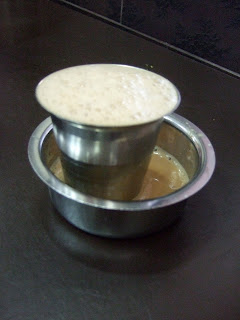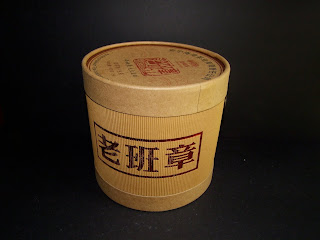












This is the Chinese reply to the tea article in the Financial Times (15 Sept 09) written by Tom Millar. (see the article in my blog 30 Oct 09).
This reply was written by Mei Xinyu and was published in the ShanghaiDaily.com on 24 Dec 09, entitled 'The truth about Chinese tea: the best is sold at home to connoisseurs.'
"Although being a home of tea, China rarely has any tea brands that can compete with foreign competitors, said the article "Why Foreigners are Beating China's Tea-makers on Their Home Turf" published by the Financial Times in October.
Even "in China, Unilever's Lipton brand has a market-leading share three times that of its closest local rival," it added. Moreover, by mentioning that the average price of Chinese tea on international markets is even lower than those of Indian tea and Sri Lankan leaves, the article implies that China's tea export industry should follow the development path of that of such countries as India.
Poor argument
The suggestion is not well-founded, although there are aspects that Chinese tea exporters should learn from other countries, such as quality control. In fact, it is wrong to draw the conclusion that the overall price and quality of Chinese tea is lower than that of Indian tea or Sri Lankan tea simply by comparing the three countries' average price of tea sold on international markets.
Unlike tea from those countries whose tea industry is mainly export-oriented, most Chinese tea is sold domestically.
Ever since the tea industry in countries like India, Sri Lanka and Kenya came into existence over 100 years ago, most of their tea has been exported.
Besides, as the consumption mode of their domestic consumers is almost the same as that of foreign consumers, there is barely any difference between the kinds of tea sold domestically and those exported.
Therefore, the average tea price of those countries on international markets is representative of the average price of all tea produced in those countries. But this is not the case with China, whose tea industry is mainly domestic-oriented. As most tea connoisseurs are within China, the best (of course most expensive) teas produced in China are sold domestically rather than exported.
That is to say, the Chinese tea sold on international markets is not representative of overall Chinese tea quality.
There is another important reason why it is impossible for China to further industrialize its tea industry as India, Sri Lanka or Kenya has done.
Looking back into history, the export-oriented tea industry in India, Sri Lanka and Kenya was created by English colonists to meet the demand of Western consumers.
One feature of the industry is highly industrialized large tea plantations. Such tea plantations resulted from English colonists' pillaging the land from local farmers and herdsmen. As most of such tea plantations had already existed for more than three generations when those countries finally got their independence, the owners of the plantations at that time could do little but to accept the plantations as a legacy.
Such practice is surely impossible in China. Given China's vast population and limited farmland, the large-scale tea plantation business model is impracticable in most areas in the country.
Despite this, there is great potential in China's tea industry. China boasts numerous famous kinds of tea, including Longjing tea, Dongding oolong tea, Pu'er tea, and so on, the quality of which is far above that of fast-food styled Lipton.
Better choice
And it is like reducing Versace to Jeanswest if the business model of selling Longjing tea, Dongding oolong tea, Pu'er tea is to follow that of Lipton.
To me, even certain successful tea products that are tailored to Westerners do not taste as good as many kinds of traditional Chinese tea that are sold at lower prices in China.
It is senseless for China to industrialize its tea industry as some other countries do.
A better alternative is for China to further promote its traditional tea culture so as to win more overseas consumers to appreciate Chinese tea.
(The author is a senior researcher under the Ministry of Commerce. The views are his own. He can be reached at meixinyu@126.com.)”




One of the most famous phrase said by Darth Vader of Star Wars was “The force is strong with this one”. This saying sums up my thoughts on this ripe pu erh cake. Produced in 2007 by Menghai Tea Factory, this new recipe cake is known as the ‘golden needle white lotus’ pu erh. This new recipe was first released in 2005 and Menghai have continued to produce this cake on quite a regular basis.
I was recommended by my Hong Kong tea drinking friend to buy this cake and I had consequently included this cake in my order with Yunnan Sourcing(YS) late last year. YS had described the tea as “This is a classic ultra-premium recipe from Menghai tea factory! The 2005 release has become a legend among Ripe Pu-erhs and has increased in value by more than 500% in just 4 years! The recipe uses already aged high grade Ripe pu-erh and brews an aromatic, rich and creamy.” This 357g cake costs me about us$26 (inclusive of freight).
This tea brews extremely well and fast. I have already gone through 1/3 of the cake and the brewing results never cease to amaze me. I found that the color from the first 5 infusions (5 seconds) was very dark, almost jet black. You may consider reducing the amount of tea leaves used per brew or shortened the infusion times. The tea produces a very aromatic and pleasant scent. There is totally no bitterness in spite of the darker color. There is hardly any ‘wodui’ (fermentation) scent that usually comes with newer ripe pu erh. My Hong Kong friend commented that the leaves used in this cake are of a better grade and he agreed that good aged tea leaves were also added to this recipe. I myself detected a mild sensation of sweetness in the tea and found the aftertaste good.
Notice the recommended brewing method in the last pix. I shall discuss about pu erh tea brewing in later blogs.
But I digress – during one of my tasting sessions of this tea, my daughter gave me a bar of chocolate. I do not eat or drink anything during a tea tasting session as I do not want any interference with my taste buds. Maybe I am getting older….I forgot and ate the chocolate and continued with my tea drinking. The result was unexpected. The tea went really well with the cocoa. The tea seemed to taste sweeter and creamy. I tried this chocolate test again and on subsequent tea sessions, the same results showed. I have tried chocolate on other ripes but this particular Menghai ripe stands out best. Yes, a quick google will show that there is commercial chocolate pu erh being sold and this is not a new idea. My opinion is not mixing the chocolate in the tea gives the drinker the addition benefit or choice for the drinker. You want chocolate with your tea…go grab a bar, if not then regular pu erh.
Overall I find this Menghai “gold needle white lotus” good. The appearance of the tea leaves (before and after brewing) are of good quality. The strength, color and aroma of the tea will appeal favorably to ripe pu tea drinkers. This slightly pricey tea cake is well compressed and storing it properly for a couple more years, as my Hong Kong friend confidently says “can only be better for the tea”.



Well 2009 is coming to an end. For tea lovers like me, this signifies that I am getting older and sillier. But more importantly, my pu erh collection is one year older. This is a happy thought.
My tea reflections for the year 2009 are :
a) I have bought too much tea this year esp pu erh. As most of these tea I had purchased are mainly from 2005 onwards, I will concentrate on new purchases on the older teas. Lesson – do not buy on impulse.
b) My tea preferences this year are mainly on the pu erh and oolongs variants. If possible, I try to brew tea twice a day (morning and evening). I tend to drink more ripe pu and my consumption of ripe pu is pretty high. As of now, my 8 tea boxes (meant for drinking) consist of 2005 hong tai chang ripe, 2000 kunming tea co ripe, 2008 gong ting ripe loose, 2007 haiwan lao cha tou, 2006 haiwan ancient tree raw, 2008 da hong pao tea, 2008 alishan high mountain oolong and one empty box. Good news though, most of these teas boxes are near empty and I look forward to new refills from my tea collection.
c) I only give a “finding” of the teas I am drinking. It is not a review but my simple findings on the tea. I am not a tea expert, but wish to share my experiences in the tea drinking. The fake pu(nov 6 2009 blog) which I had purchased was an eye opener for me and the pictures posted will help readers be more astute in their tea purchase. Expensive tea does not mean good tea. The 2005 hong tai chang 400g (nov 27 blog) costing me about us$20 is considered “my 2009 favorite ripe”.
The above pictures are of the only ‘made in 2009 pu’ I had purchased this year. This is the Haiwan Laotongzhi pu erh composed entirely of lao ban zhang leaves. This is a 2kg edition, 400g per cake, packed in a cloth bag and placed in a nice cylindrical cardboard container.
I hope 2010 will be a good and blessed year for everyone. I hope to make a trip for my tea adventures on 2010, and post more teapot news with my traveling teapot. I end my tea blogs for 2009 with this quote from Zhou Zuoren on the philosophy of tea:
“In simple terms, drinking tea is a way to get a moment of respite from the hustle and bustle of life and work, to experience comfort and joy in the groans and grinds of this bitter life, to seek fulfillment and harmony in the imperfection and the harshness of present reality and thus achieve a sparkle of peace in the soul that can endure to eternity.”